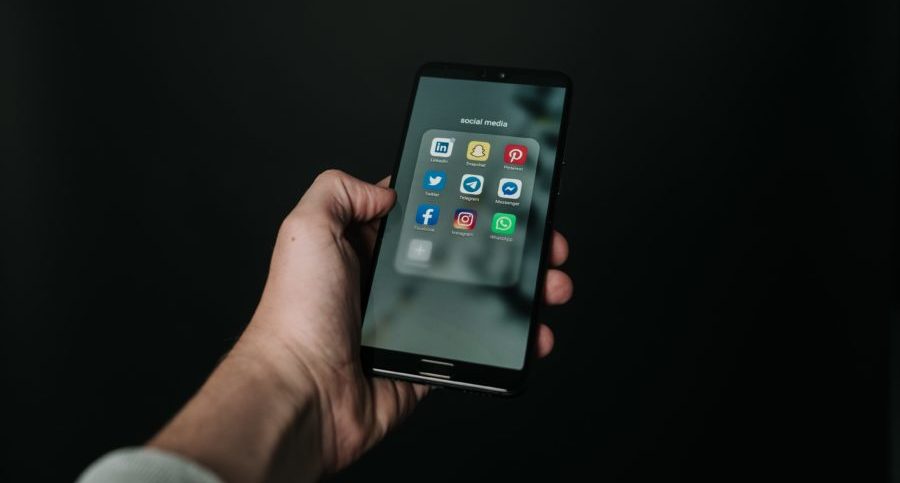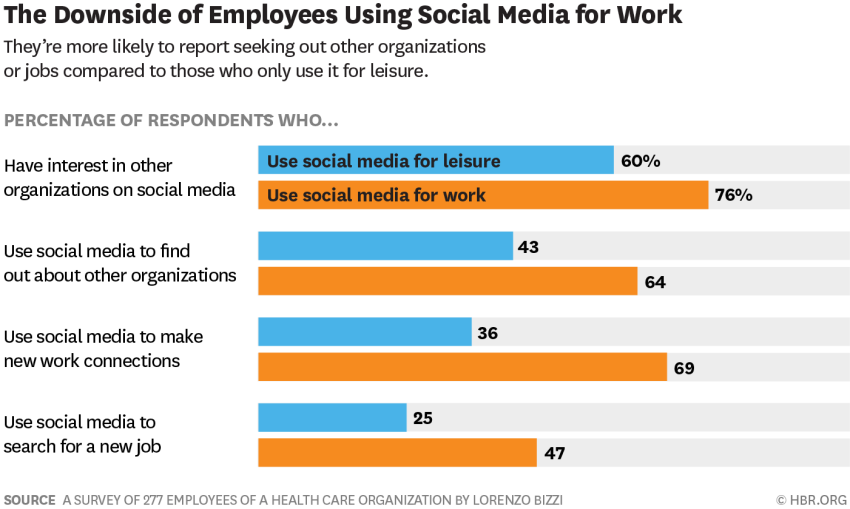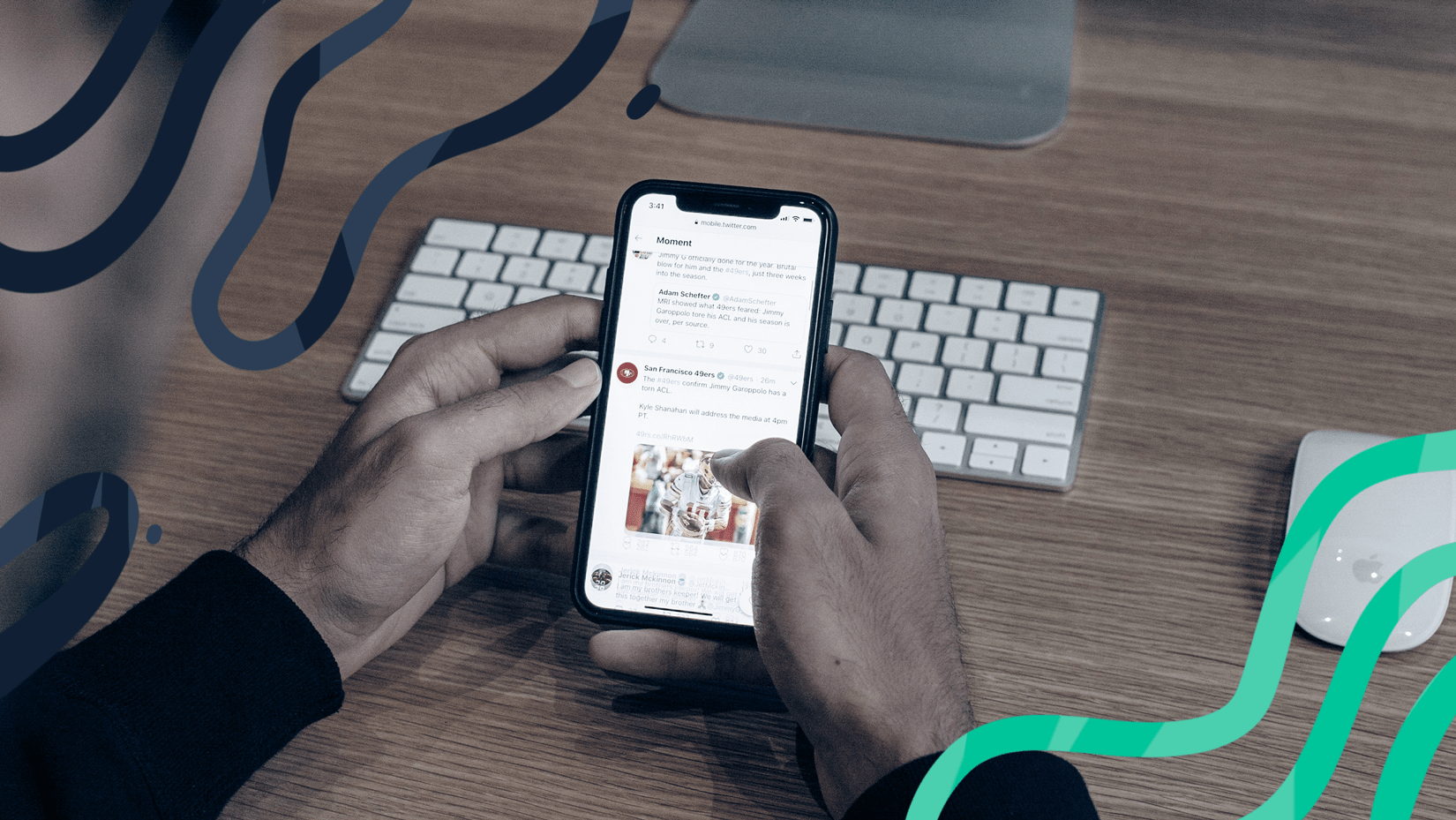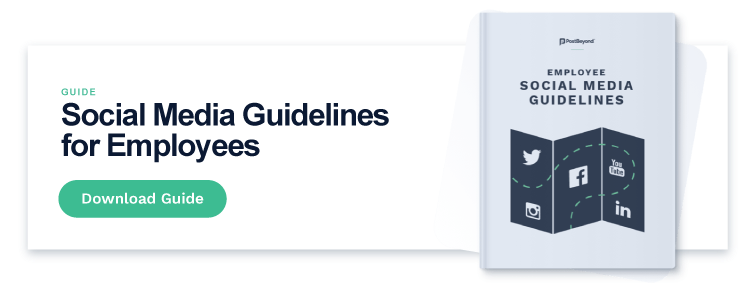A shocking 490 million new users flocked to social media platforms last year, twice the year-over-year increase seen from 2018 to 2019. Social media is everywhere — and the workplace is not immune to the benefits, detriments, and risks associated with its usage.
Whether or not to allow personal social media use in the workplace is a tricky topic. As a corporate tool, social media — done well — can be the key to a company’s success. Individually, that line is a little less clear.
Here, we provide a full breakdown of the pros and cons, as well as the research and stats, about social media in the workplace so that you can make informed decisions about your own company’s social media guidelines.
How is social media used in the workplace? How can it be used?
Conceptually, social media use is pretty vague. Someone using social media in the workplace could be:
- Posting marketing material on Facebook on behalf of the company
- Tweeting about an objectionable coworker
- Looking for a new job on LinkedIn
- Sending messages to their child via WhatsApp
- Collaborating with a coworker on a project using Slack
- Browsing videos on TikTok
The many different forms of workplace social media usage make it a difficult thing to regulate. In order to decide which types of social media usage to allow, it’s important to categorize them to get a clearer understanding of what uses you find objectionable and which are actually beneficial.
Personal vs. Work-related
Categorizing workplace social media use by whether it is personal or work-related is usually simple. Is the user communicating with a coworker, client, supplier, or company audience? Or are they communicating with friends, family, or anonymous strangers?
The only complication in this classification comes from a social selling standpoint. Employee advocacy programs, for example, rely on employees sharing content and building relationships online, but they benefit the company itself.
Measuring employees’ impact and sharing guidelines on what content is helpful can clarify this blurred line in the workplace.

Type of Device
Another distinguishing factor between types of social media use is what device employees are using to access the platforms.
The first factor is determining whether these devices are provided by the company or by the individual. Employers have more say over what happens on a company device or network, while it may be harder to regulate use of personal devices.
Additionally, these devices can take many forms: desktop computers, laptops, tablets, smartphones, and even eReaders can give employees instant access to social media via connections to ethernet, wifi, or cellular data.
Type of Platform
Most people list the same few social media sites when they think of what their employees are using. In reality, there are numerous sites and apps that fill any number of different niches. Seven of the most common types of social media platforms are:
- Social networks such as Facebook, Twitter, and LinkedIn, which broadcast your posts to a select audience and provide you with input from others.
- Media sharing networks like Instagram, YoutTube, TikTok, and Snapchat, which are more suited to sharing photos, videos, and graphics.
- Discussion forums such as Reddit, Quora, and Digg, where users can share content or questions anonymously and engage in large-scale community conversations.
- Bookmarking and content curation networks including Pinterest and Flipboard, which allow users to compile, share, save, and comment on content from elsewhere on the web.
- Customer review networks like Yelp and TripAdvisor, on which users can discuss and review real-world locations, businesses, or services.
- Blogging and publishing networks such as Tumblr, WordPress, and Medium, where users can publish, discover
 and discuss often longer-form content.
and discuss often longer-form content. - Interest-based networks including Last.fm and Goodreads, where users can unite around content specific to an individual hobby or interest.
Functions of Social Media
Social media use can also be based on a variety of different functions, both personal and professional. These cover a wide range of uses, including but not limited to:
- Recruitment. As of 2015, up to 84% of companies were using social media for recruitment purposes. With the overall increase in social media use, we can only assume that this figure has increased. At the same time, this means that individuals are also using social media to investigate or find new jobs.
- Communication. Businesses can use social networks as a means to disseminate external information to their audience. Alternatively, businesses can also have an internal platform to communicate with employees. At the same time, employees can use internal social media to collaborate and communicate with coworkers, or more personal venues to talk with and hear from their own connections.
- Learning. Individual employees can use social media for research, take online classes, or ask questions. Businesses can use social media to provide a compilation of training materials or helpful wikis.
- Engagement. Social media allows users to connect with others who aren’t physically present, opening up opportunities for entertainment, debate, and interest. This could be from a company page that posts about new product developments or highlights employees, or could be as simple as an employee watching a video of a cat during their lunch break.
- Employee Advocacy. As we touched on before, employee advocacy blends professional and personal use to make social media beneficial to companies and individuals alike. The business benefits from an increased audience and employee participation. While the individual benefits from knowing that what they have to say is valued by their employer.
Social media in the workplace: what the research says
While the benefits or detriments of social media use in the workplace may seem murky to those first diving in, there are years’ worth of research that point to relatively clear results. Two 2020 studies, from Tunisia and Korea respectively, both found that workplace social media usage had a positive impact on employee performance.
Most of the research, however, is older by a year or two. This may be due in part to the fact that the COVID-19 pandemic that struck the globe in 2020 kept many out of their physical workplace, making workplace-based research difficult.
A 2018 study shared by the Harvard Business Review shows that in American workplaces, social media usage can be instrumental in building camaraderie among coworkers and spurring innovation — if they were using social media to connect with those they work with.

Employees connecting with those outside of the company were more likely to be unmotivated and lack initiative.
At the same time, those who used social media more frequently were also more likely to leave their current job, even if they were also happier there, to begin with.
Pros and cons of social media in the workplace
The research itself, then, points to the positive and negative impacts of social media in the workplace. Here are more pros and cons to when weighing the value of allowing social media in the workplace.
Pros
- Employees who regularly use social media are more likely to be collaborative, creative team players. A 2013 study by Warwick Business School showed that professionals who were good at connecting with others online were also better at connecting with others in the workplace. This led to increased productivity as the social media-savvy employees could make sales in less time, work in teams more effectively, and solve problems more efficiently.
- Social media use in the workplace can help raise employee morale. Employees can use social media for short mental breaks throughout the day. However, businesses can be proactive in praising their members publicly online. 26% of employees rank recognition for their work as a top factor in staying in their current position, and what better way to show employees that they matter than by declaring it to your whole company or your audience?
- Allowing employees to use social media at work makes employee advocacy programs more effective. By providing employees with the opportunity to share anecdotes and content with their own followers, you increase your company’s social reach and get each employee involved in social selling.
Cons
- Most time spent on social media is time that employees are NOT being productive. For example, 70% of Facebook users use the platform at least once daily. And 56% of employees agree that even when using social media for work-related purposes, it distracts them from the work they actually need to be doing. So regardless of whether or not the use is justified, it can cause employees to get sidetracked during the day.
- Social media usage can increase turnover rates because employees have the opportunity to be exposed to or even seek out other job opportunities. Obviously, this is detrimental if you’re actively losing employees; however, it also means that social media can be used as an effective recruiting tool. And, if the opportunities your employees see online aren’t as good as the company culture and benefits they’re offered with you, you’re not at risk of losing them.
- Workplace social media usage can lead to legal problems or bad press if used incorrectly. Employees can publicly share workplace incidents that, out of context, reflect poorly on the organization. HR and recruitment personnel using social media to investigate potential hires could unintentionally uncover information that they legally cannot take into consideration in hiring decisions — which is tricky when 77% of those in HR and recruitment admit to using social media for just that purpose.
Our takeaway
There’s no clear answer to whether social media use should be regulated in the workplace. But it is clear that social media has its place and its pitfalls.
The key to a workplace social media policy is balancing the two and ensuring that your employees know the time and place for the personal versus the professional.





